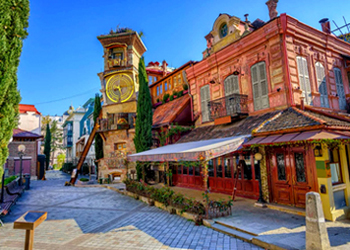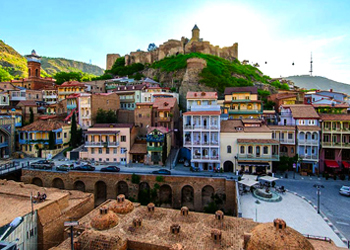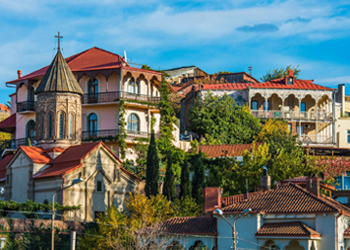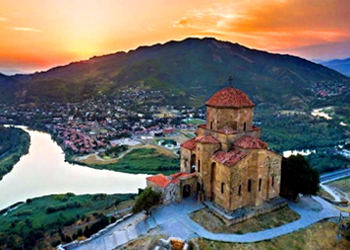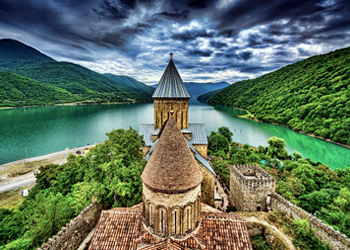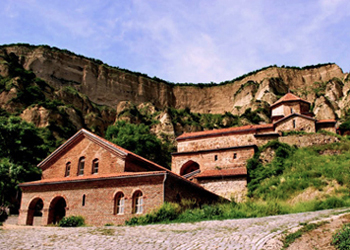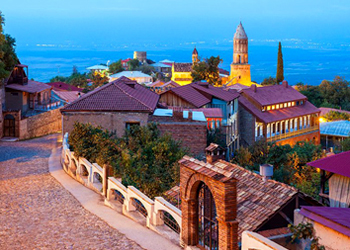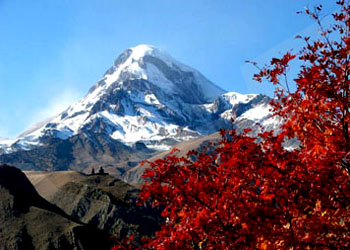Transport in Georgia:
Get by air: Thanks to its geographical location it is easy to arrive to Georgia on any kind of transportation. Flights from the centre of Europe take only 3-4 hours. Non-stop flights to Tbilisi are available from: Aktau; Alma-Ata, Amsterdam, Athens, Baku, Dnepropetrovsk, Donetsk, Dubai, Frankfurt, Istanbul, Kharkov, Kiev, London, Minsk, Munich, Paris, Prague, Riga, Tel-Aviv, Vienna, Yerevan. Daily flights are available from Kiev, Munich, Istanbul and Baku. From other cities there are flights two, three or four times a week. Different international airports connect Tbilisi to other cities of the world. You can use service of International as well as Georgian National Air Companies like: Air Baltic; Airzena - Georgian Airways; Aerosvit; Arkia; Armavia; Austrian Airlines; Azal - Azerbaijan irlines; Belavia - Belarusian Airlines; BMI; Czech Airlines; Lufthansa; Scat – Kazakh Airlines; Sky Georgia; Turkish Airlines; UM Airlines - Ukrainian Airlines; Travel by Bus: Daily buses to Tbilisi depart from Baku, Istanbul, Ankara, Trabzon and Yerevan. There are everyday departures from the different cites of Armenia: Yerevan, Vanadzori, Stepanavi, Gumri, Artek, Spitak; Azerbaijan: Baku (available from 07:30 am till 15:00 pm); Turkey: Istanbul, Trabzon (available from 10:00 am till 15:00 pm). From Athens buses depart several times a week. Buses run from the central bus stations of every city where one can get all detailed information about the exact departure time. Travel by Train: International connections are available from Azerbaijan and Armenia. Trains from Baku are available every day, prices range between $40 and $50. The main railway station in Armenia, the Sasuntsi Davit Station is located on Tigran Mets Avenue, near the metro station of the same name. A second railway station in Yerevan, called Arabkir Station, is located above the Cascade. For more information visit the website: www.railway.ge Travel by Car: You can get to Georgia by car from Europe as well as from Asia. The historically famous Silk Road crosses the country. Georgia has highways connecting it directly to Azerbaijan, Armenia and Turkey. To cross the border from these three countries is free of charges. Travel by Sea: One of the options for getting to Georgia is by sea. There are two main sea ports in Georgia: Batumi and Poti. Batumi port: is a remarkable port of the country. It is of universal type – receiving and sending all types of sea vessels and serving passengers in high standards. A fast boats conduct regular sailing routes. Ferries service passengers traveling between Batumi and Ilychevsk. The passengers coming to Georgia for short trips do the sightseeing not only in Batumi (Botanical Garden, Gonio Fortress, Seaside park, museums) but Kutaisi as well (Bagrati Cathedral, Gelati Monastery, Motsameta). The ships are served by local maritime firms and tourist agencies. More information can be found on: www.medcruise.com or: www.batumiport.com Ferries to Poti port: depart from Ukrainian ports Ilyichevsk and Odessa. The ferry is equipped with comfortable cabins for passengers. Departures are every Tuesday and voyage takes just several hours. More information can be found on: www.potiseaport.com The principal ports of the Black Sea are Odessa and Sevastopol in Ukraine; Poti and Batumi in Georgia; Novorossiysk in Russia; Constanta in Romania; Burgas and Varna in Bulgaria; Ereğli, Samsun, Sinop and Trabzon in Turkey. Subway: In the capital city of Georgia – Tbilisi, you can use a metro (underground). Tbilisi Metro operates from 6 am until 12 pm and serves approximately 300 00 people a day. There are two main line with 22 metro stations, in almost every district of the city. Fare for traveling by metro is just 0.5 GEL. One can get one entry coin for 0.4 GEL or buy a plastic card the price of which varies according the number of entries. Tbilisi Metro has two lines and includes 22 stations. Then construction of the 23rd station "University "is in progress. Almost all the stations are underground, only two of them –"Electrode" and "Didube" create 3 km. district up on the ground. Yellow buses: Another mean of transportation in Tbilisi is so called yellow buses. Fare for traveling is 0.5 GEL. You also can travel on mini-buses by catching them by raising your hand and asking to stop on any place you need on their route. The maximum fare for mini-buses is 0.5 GEL. Since February 1, 2009 the bus and subway fare is paid via control-cash devices. Paying straight to the bus driver of the buses is banned. The cash device doesn’t give change so the fare should be exactly paid. Travelling ticket should be obtained as soon as the passenger gets on the bus. You’ll be charged with 5 GEL if you travel without a ticket. Every passenger using the travelling card travels at a discount. The traveling cards are sold in every subway stations. The passenger pays 2 GEL and recharges the card according to the desired amount. Taxi: Taxi is the fastest way of relocation in Tbilisi. It is the only public transport that is available during 24 hours. You can use taxi service any time of day and night by stopping it in the street or calling up on the phone.


